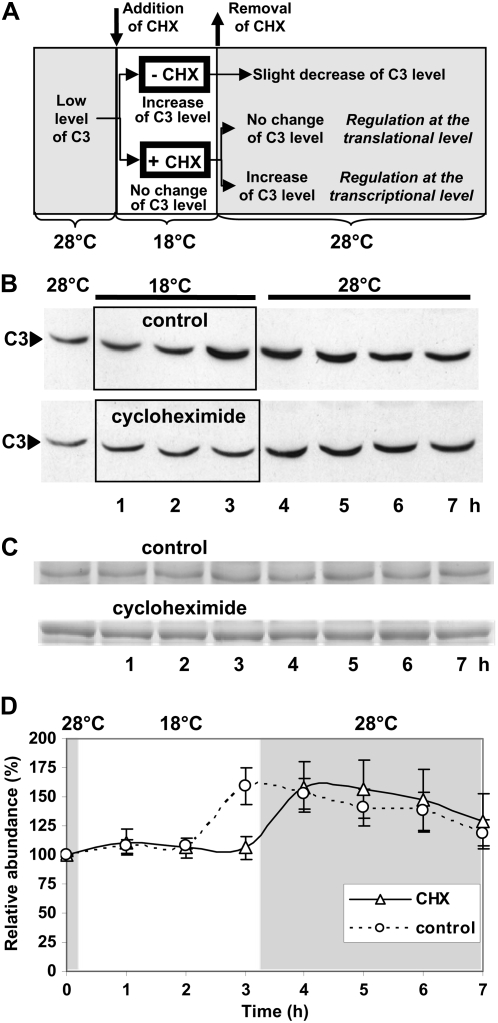Figure 4.
Up-regulation of c3 occurs at the transcriptional level. A, Scheme of the experimental procedure with and without cycloheximide (CHX) treatment. Wild-type cells were grown at 28°C under a light/dark cycle and transferred at LD4 to 18°C by centrifuging them and dissolving them in 18°C precooled TAP medium. In one case, CHX was added (see “Materials and Methods”). After 3 h at 18°C, the two different cell cultures were centrifuged again, washed with TAP medium, and then dissolved in 28°C prewarmed TAP medium without the inhibitor. Cells were grown for an additional 4 h at 28°C. In the presence of CHX at 18°C, no translation of c3 mRNA can occur, but c3 mRNA may accumulate if the up-regulation of c3 at 18°C occurs at the transcriptional level, and thus an increase of C3 protein after the removal of CHX can be expected. B, Immunodetection of C3 levels. Cells from the control (−CHX) and cycloheximide-treated cells were harvested before, in the middle of, and after treatment as described for A at the indicated time points, and crude extracts were prepared. Proteins (50 μg per lane) were separated by 9% SDS-PAGE along with a molecular mass standard and immunoblotted with anti-C3 antibodies (see “Materials and Methods”). C, A random nonspecific Coomassie blue-stained band from duplicate gels shows that similar amounts of proteins were loaded. D, Densitometry quantifications were done with two independent experiments (see “Materials and Methods”). Therefore, the amount of C3 at time point 0 (28°C) was set to 100% and used as reference.

